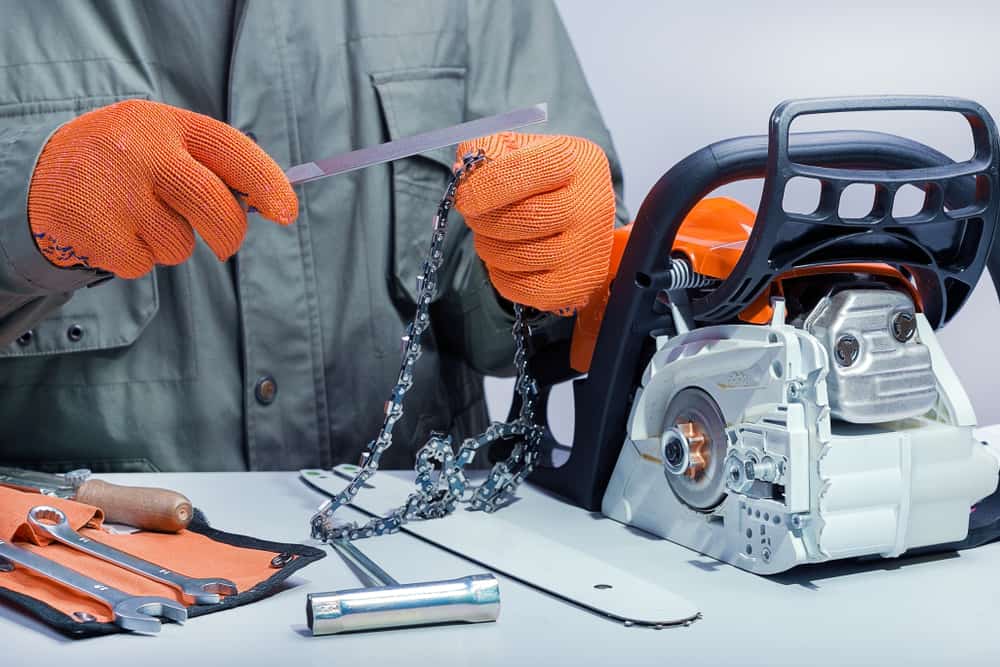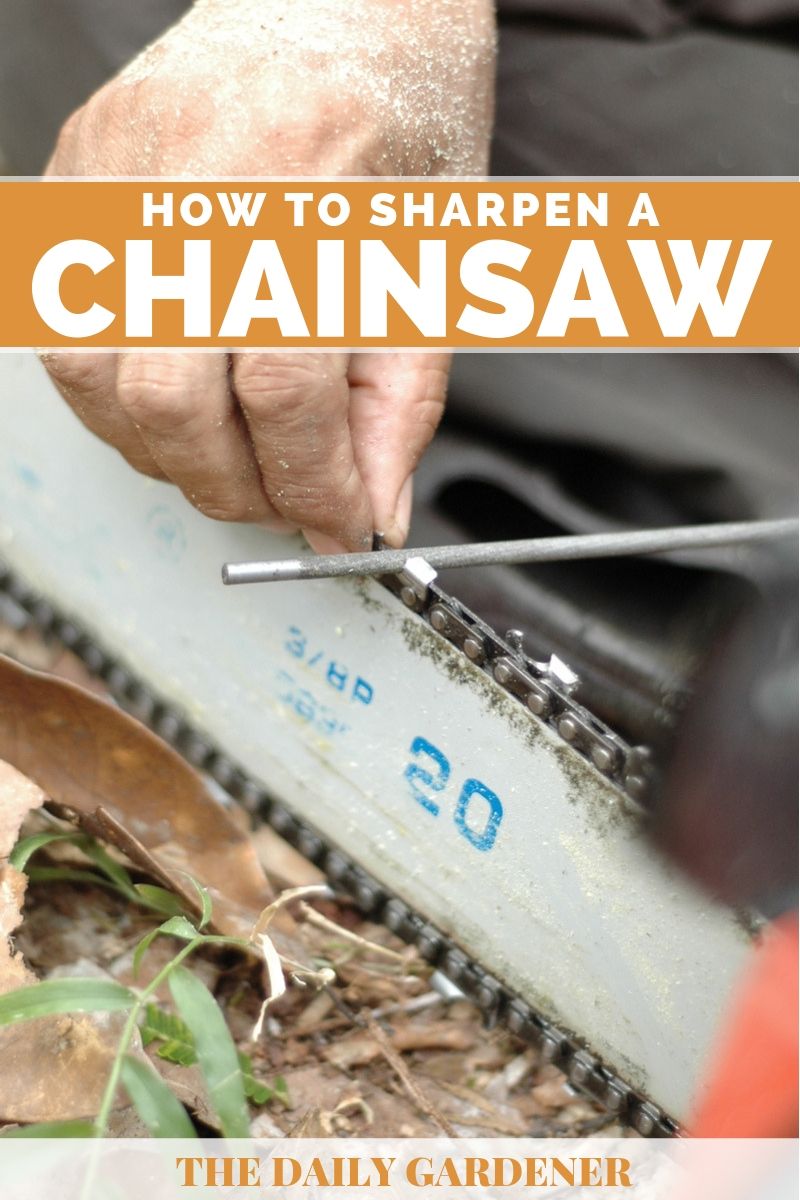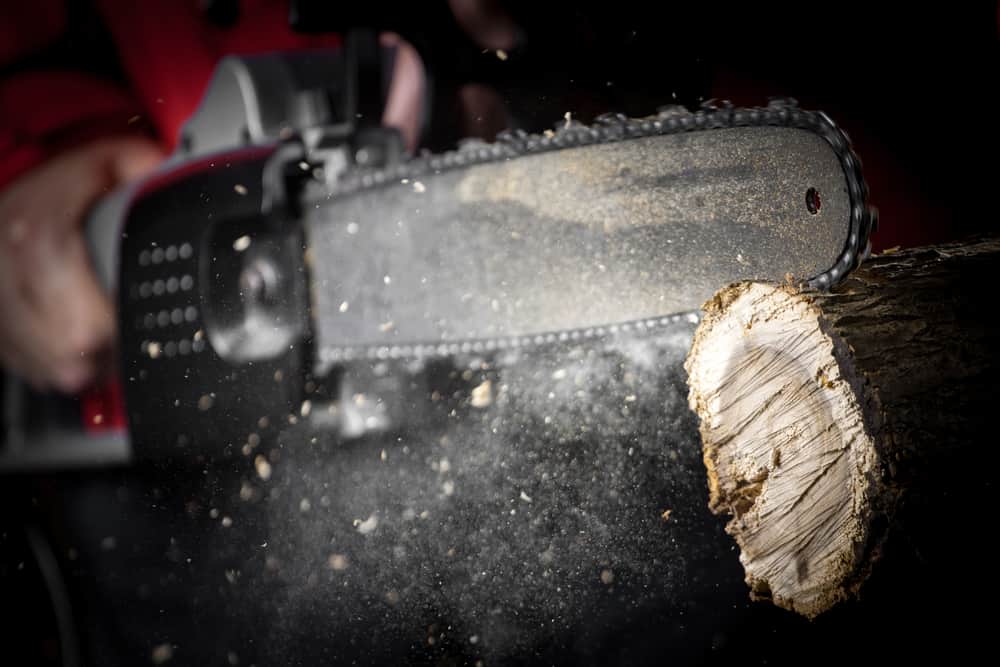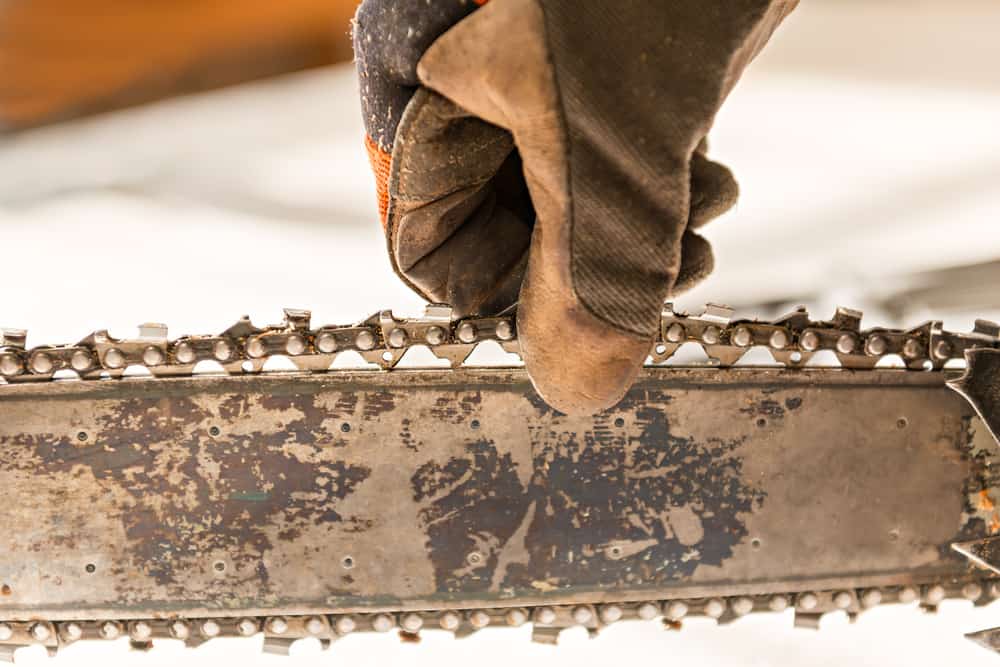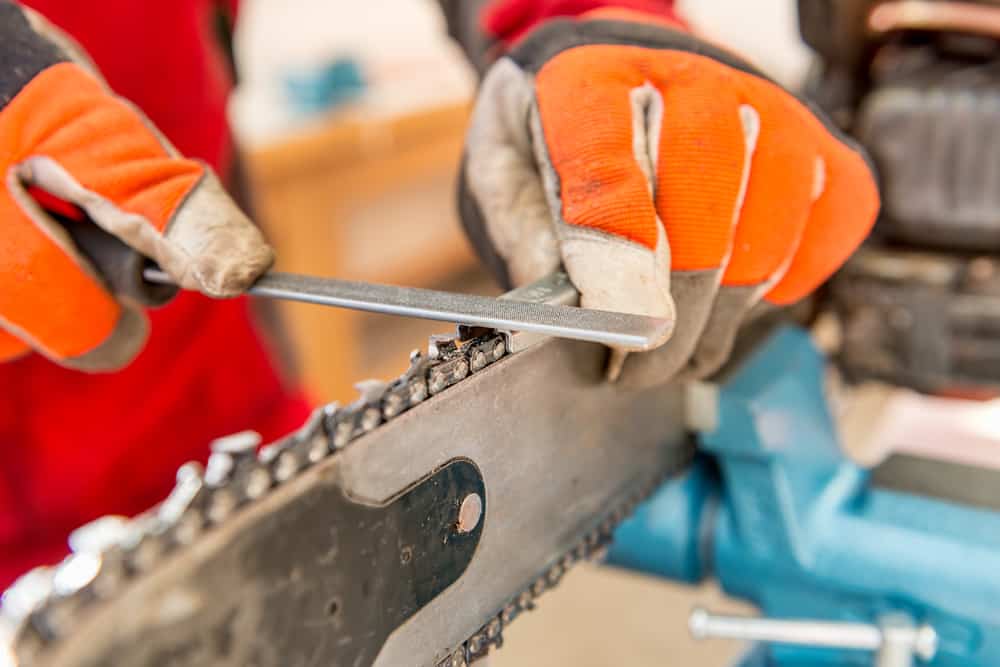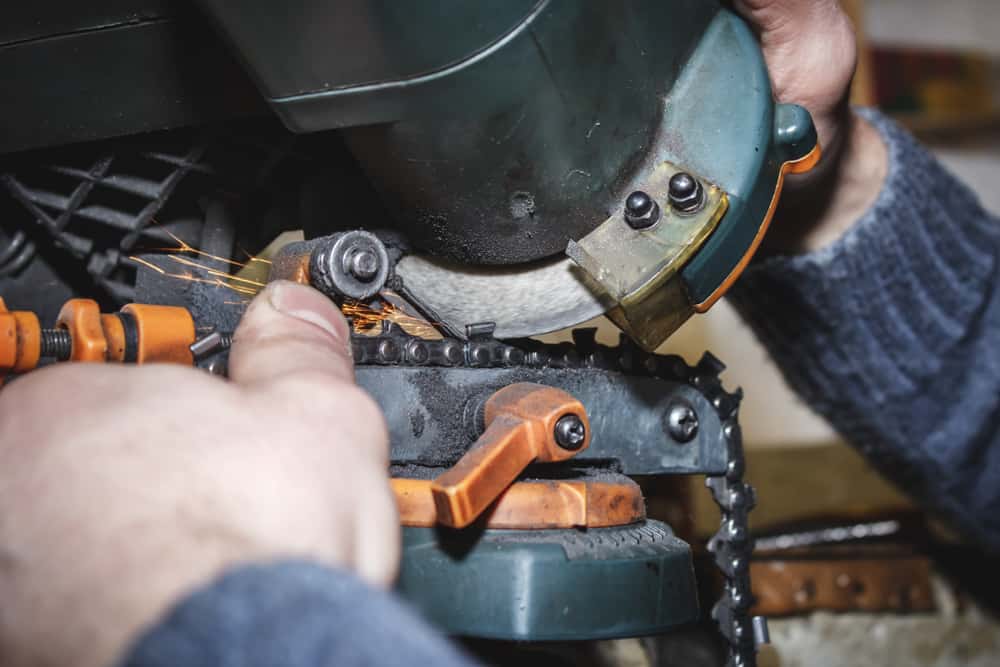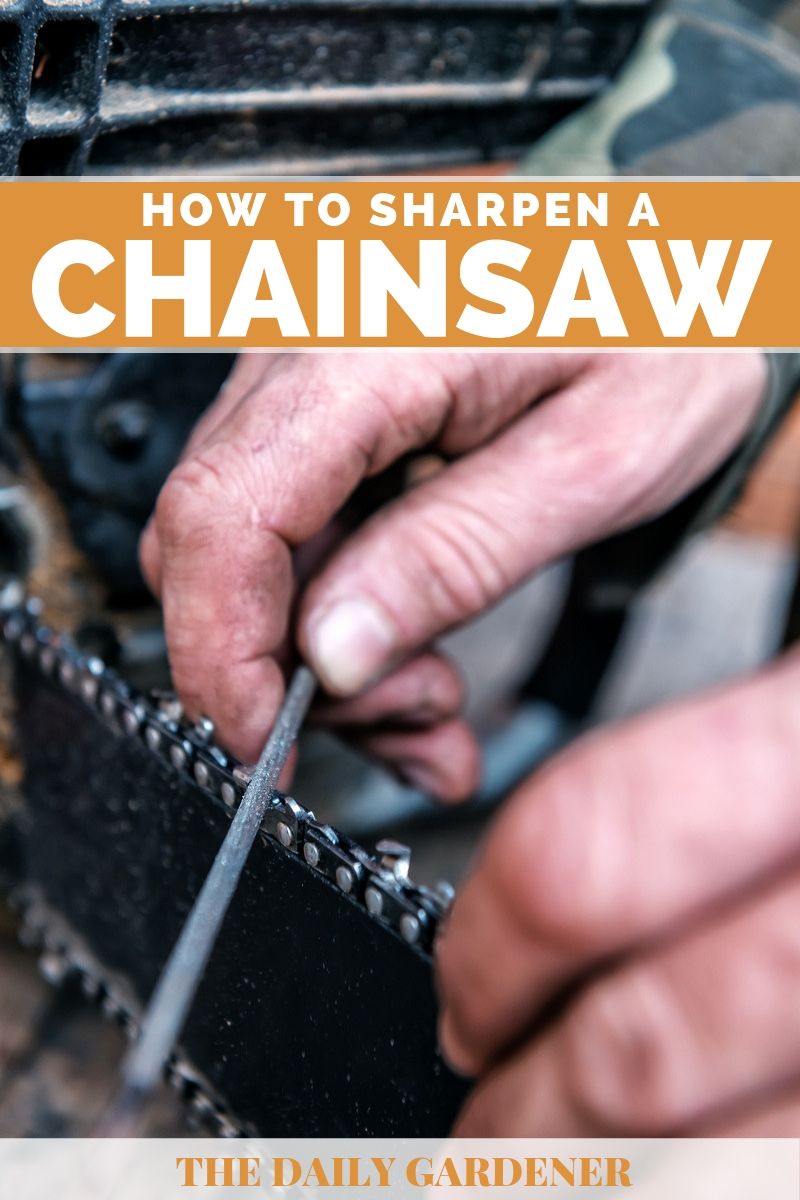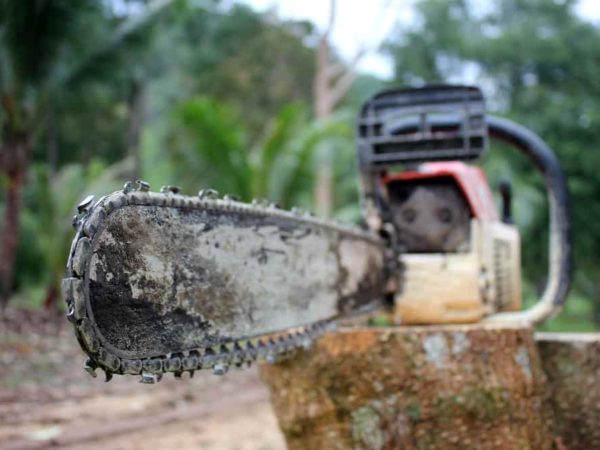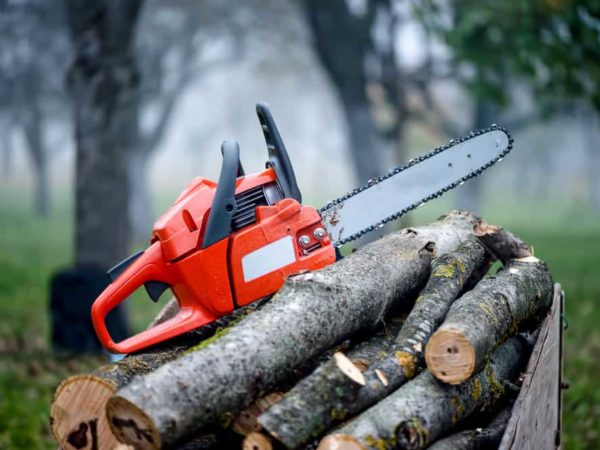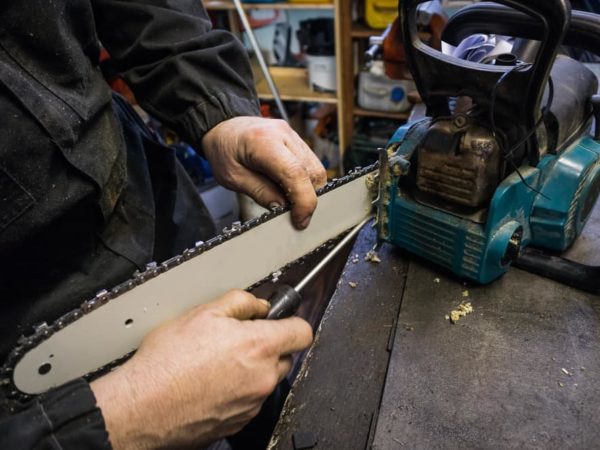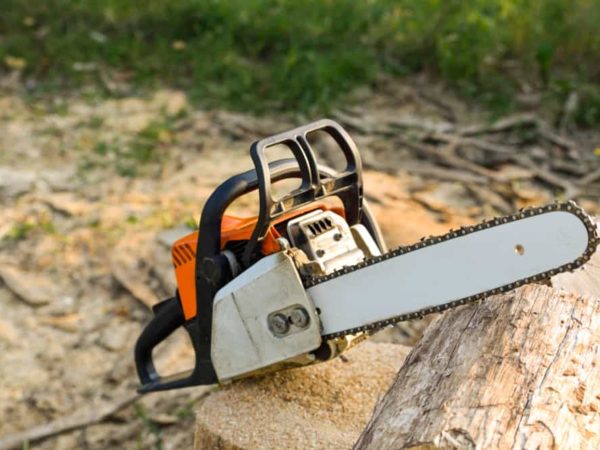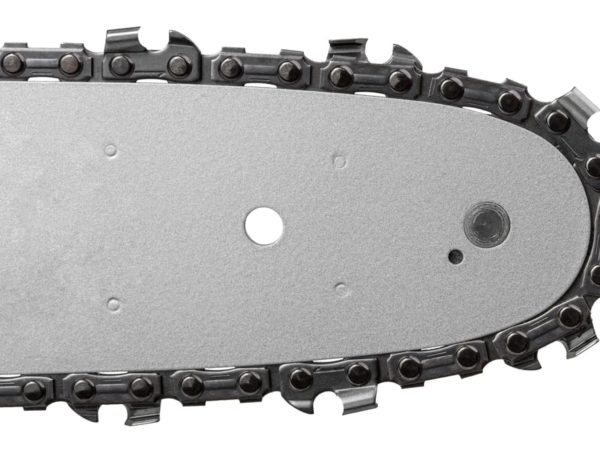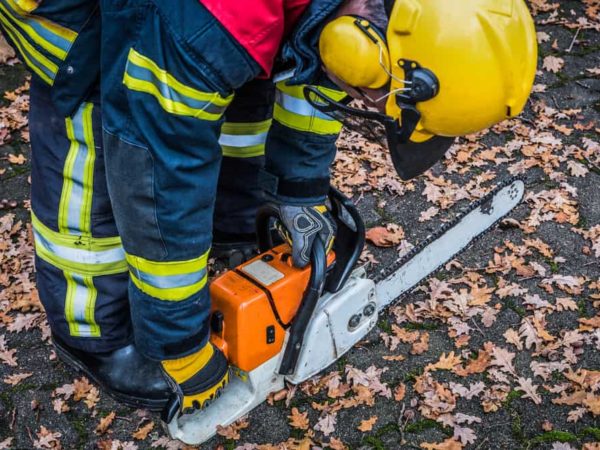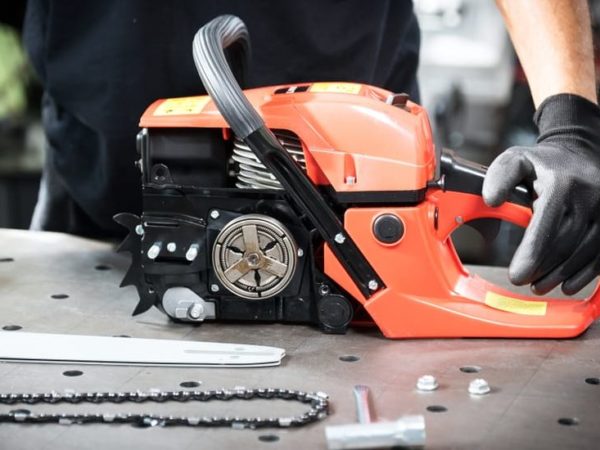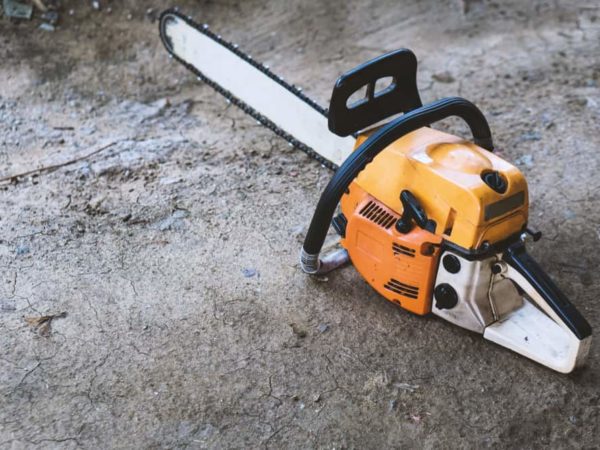A chainsaw blade can become dulled surprisingly quickly, and when this happens you have three options: you can replace it, have it sharpened professionally or sharpen it yourself. The first of these choices is expensive, and the cost of the second option also adds up quickly. This means doing it yourself can save you a lot of money in the long run.
Here, we look at how to sharpen a chainsaw at home to give you all the information you need to carry out the operation safely and effectively.
If you want a preview of a lot of the things we’re going to be talking about or you want something that will help you visualize what we’ll be discussing, you can check out this video first.
Table of Contents
How do chainsaw blades work?
Before we look at how to sharpen them, let’s look at the anatomy of chainsaw chains to see how they work. This is important information if you want to know how to sharpen them correctly.
Whether you have a gas chainsaw, a battery powered chainsaw or any other type, chainsaw blades are made up of two important elements, the cutting teeth and the “rakers” (also known as depth gauges).
As you can probably guess from the name, the cutting tooth is the part that does the cutting, but the raker is just as important. Rakers are positioned just in front of each cutting tooth to control how deep the tooth “bites” into the wood.
If the raker is too high, the tooth will skim over the wood without cutting into it, reducing the effectiveness of the chainsaw.
However, if the raker is too low, the tooth will bite too deeply into the wood. This may cause the tooth to get stuck in the wood and can result in violent kickbacks.
Each cutting tooth has an angled blade, and the teeth are arranged with the blades positioned in alternating directions, so one blade is angled to the left of the saw, the next to the right, the following one to the left again and so on.
The theory of sharpening a chainsaw blade
Now we have seen how chainsaw chains are set up, we can understand our aim when sharpening them.
For a chainsaw blade to cut smoothly, the objective is to sharpen each tooth to the same height and at the same angle. If they are not all filed down to exactly the same shape, the saw will not cut smoothly, and you increase the risk of kickbacks.
At the same time, you also need to ensure the rakers are filed down to a uniform height that is not too high and not too low – again, to ensure the saw cuts smoothly and to minimize the risk of kickbacks.
Now let’s have a look at how to do it.
Different methods
Bearing in mind that our objective is to sharpen the teeth and file the rakers as uniformly as possible, let’s have a look at the two basic ways to do it – that is, using a hand file and using an electric grinder.
1. Using a hand file
Sharpening your chainsaw with a hand file is the simplest and least expensive way to do it, although this method also takes practice to master. If sharpening with a file, you can either do it with the chain still in the saw or removed and held in a bench vise.
Since all chains have an optimal angle for the cutting blade of the teeth, the first thing to do is find out the specs of your chain.
For example, if your cutting teeth need to be sharpened at 25°, you need to make sure they are all sharpened at exactly this angle. You also need to make sure you have the right sized file for your blade.
When filing by hand, look at the top of the tooth. Usually, there will be a line there that indicates the correct angle for sharpening, so you can use this as a guide.
If you are filing with a bench vise, you can also measure the correct angle and mark it on the vise to give you something to follow.
When filing, you should make sure you hold the file level – it should be perfectly horizontal as you work.
Since the blades are lined up in alternate directions, you need to go all the way around the chain sharpening every second tooth. When you have finished, flip the chain and do the same in the other direction.
When this is finished, you also need to file down each raker so that it is in line with the top of each tooth. You can do this by eye, but it is much better to use a special depth gauge measure that helps you file more accurately.
Here’s a video that shows you some of these techniques in action.
2. Using a powered grinder
The theory behind powered chainsaw sharpener is the same – it is just a more efficient and sophisticated way of achieving the same result.
With these machines, you place the chain inside and then set the grinder according to the specifications of the chain you are sharpening.
Once the chain is in place and the grinder is set, you sharpen the chain by applying the spinning grinder to each tooth in turn. Again, first, you sharpen every other tooth in one direction before changing the grinder to sharpen the alternating teeth in the other direction.
This is all demonstrated very clearly in the video at the top of this post if you’re having trouble visualizing it.
The trick is to grind each tooth delicately – otherwise, you can overgrind the teeth. You can also overheat them, which will make them become brittle.
Since the objective is to file all the teeth evenly, another important tip is to find the most damaged tooth first and start with that one. You can then use this tooth as the guide for sharpening all the others.
Save money and keep your saw in optimum condition
As we said at the beginning, blades can become dulled very quickly, and it is important to sharpen them for both performance and safety.
Since buying new chains or having them sharpened professionally can be expensive, doing it yourself will be a much more economical choice – and in this guide, we have explained all you need to know about the basics of how to do it.
Don’t forget to pin it!

